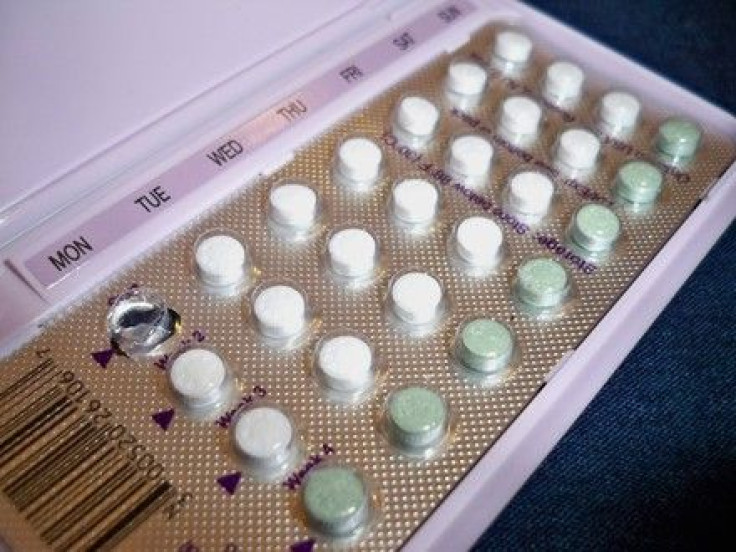After Years Of Decline, Fertility and Birth Rates Stabilized From 2011 to 2012, CDC Reports

Have you noticed fewer children on trains and planes recently?
The U.S. Centers for Disease Control and Prevention (CDC) may have some answers as to why. The CDC's National Center for Health Statistics has released its birth and fertility rate trends for 2012.
The birth and fertility rates in the United States appear to have stabilized in the past year. During the year 2012, 3,958,000 children were born. This is similar to the number of children born in the previous year. Likewise, fertility in the United States has remained unchanged in the past year. The fertility measurement indicated how many children the CDC expects to be born in the space of 12 months. .
According to the new CDC data, the birth rate has consistently decreased from the year 2007 until 2010 and between 2011 and 2012, it has stabilized; fertility has remained nearly the same for 2012 as it did in 2011, at 63.2 births per 1000 women. This general trend could be due to a number of factors, including:
- greater awareness of how pregnancy occurs
- better family planning
- enhanced evaluation of economic standing
- availability of contraceptives, including condoms, emergency contraceptives and hormonal birth control methods.
Notably, the birth rate amid teenage mothers has fallen eight percent. Their fertility is also much lower, at 31.3 births for every 1000 women. This could be due to lifestyle and family planning. For example, the Bureau of Labor Statistics reports that 66.2 percent of high school graduates in 2012 were enrolled in colleges and universities before their graduation date — which suggests that more teens than ever are forward-looking. Furthermore, 54 percent of teenagers use hormonal birth control in the form of the pill, reports the Guttmacher Institute.
The stabilization of fertility among teenagers can also (at least partially) be explained by their reasons for using birth control: according to the Guttmacher Institute, nearly 14 percent of them use it for noncontraceptive purposes, such as the treatment of acne or polycystic ovary disorder, but it still effects their ability to bear children in their teen years.
Birth control (and other forms of hormonal contraceptives) work by making the body less likely to become pregnant. Many alter the body's hormones — estrogen and progesterone — to prevent ovulation or block the cervix with mucus and otherwise stop the fertilization of an egg by sperm. The body, without birth control, tends to fluctuate estrogen and progesterone levels throughout the month to ensure the maturity of the egg and uterine lining before ovulating. Ovulation is when an egg is ready to be fertilized by sperm and implanted into the uterine lining. Birth control keeps hormone levels relatively static in the effort to prevent the egg from maturing enough to be fertilized at all. Fertility is a measure of how well the body can prepare eggs for fertilization; fertility is poor while women are on hormonal birth control.
The stabilization of birth rate and fertility amid all women can also be partially explained by contraceptive use during intercourse. the Guttmacher Institute reports that more than 99 percent of women aged 15-44 who have ever had sexual intercourse have used at least one contraceptive method. Nearly 6.2 million women rely on the male condom; condom use is especially common among teens and women in their 20s and women with one or no children. If more women are carefully planning when they will and will not start families, it would make sense that brith rates are stabilizing.
Most things that allow women to take more control of their reproduction are very good. The bottom line is that every woman should be the one to decide when she wants to have a baby. Is as a society we are improving education and access to health care, good for everyone. No need to panic, millions of women a year are sill having babies. The article did not mention that economics may also be a reason for the stabilization of the birth rate.
Dr. Frederick Licciardi, MD, of the NYU Fertility Center at NYU's School of Medicine, has said that the stabilization of birth and fertility rates is nothing to panic about. "Most things that allow women to take more control of their reproduction are very good. The bottom line is that every woman should be the one to decide when she wants to have a baby." Given that there has been a steady downward trend over the past few years, it is likely that women are making choices to accomplish their goals and have families when they are better prepared.Dr Licciardi adds, "As a society we are improving education and access to health care,[which is] good for everyone."
Source: Hamilton BE, Sutton PD. Recent trends in births and fertility rates through December 2012. National Center for Health Statistics. 2013.



























